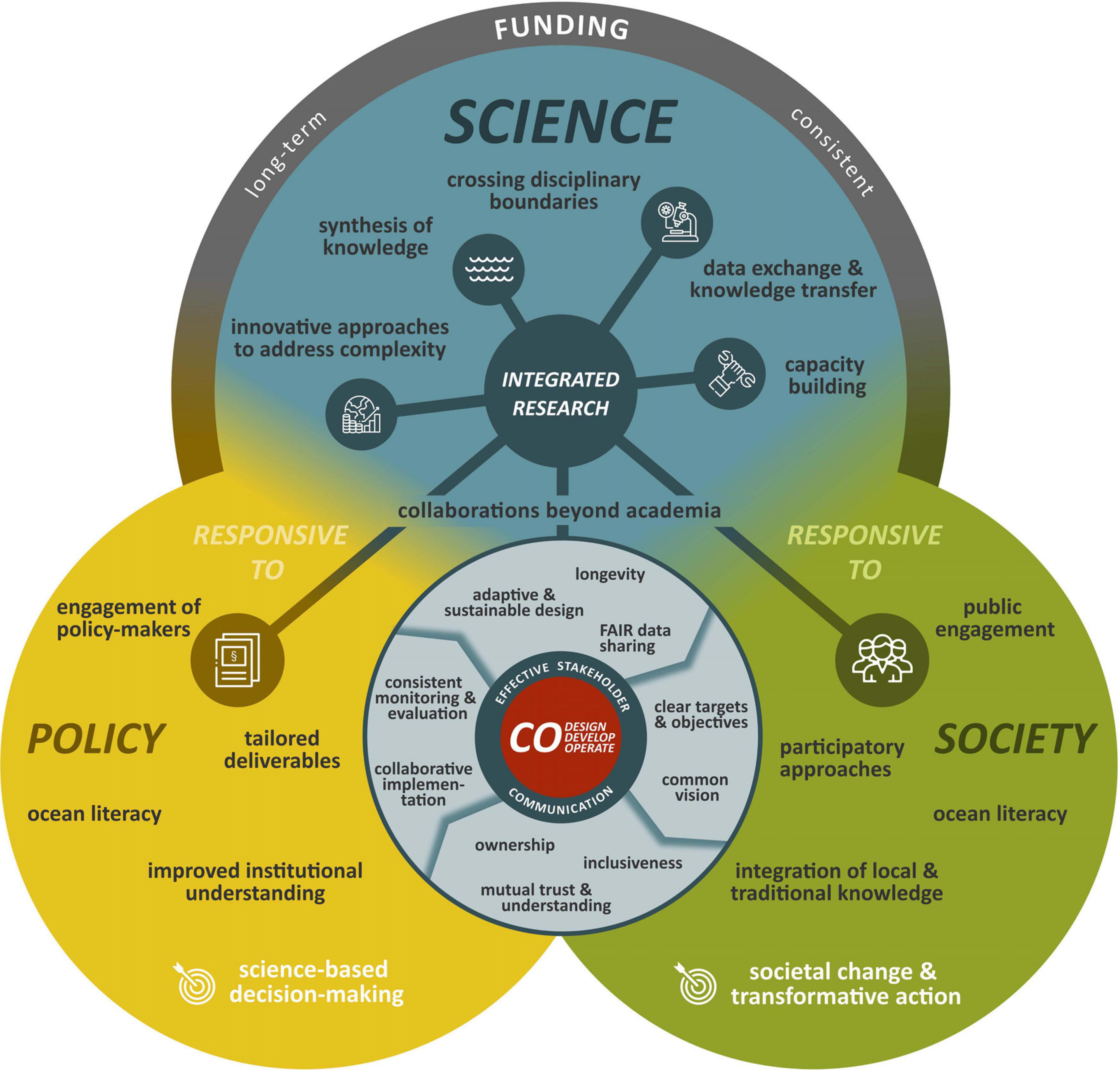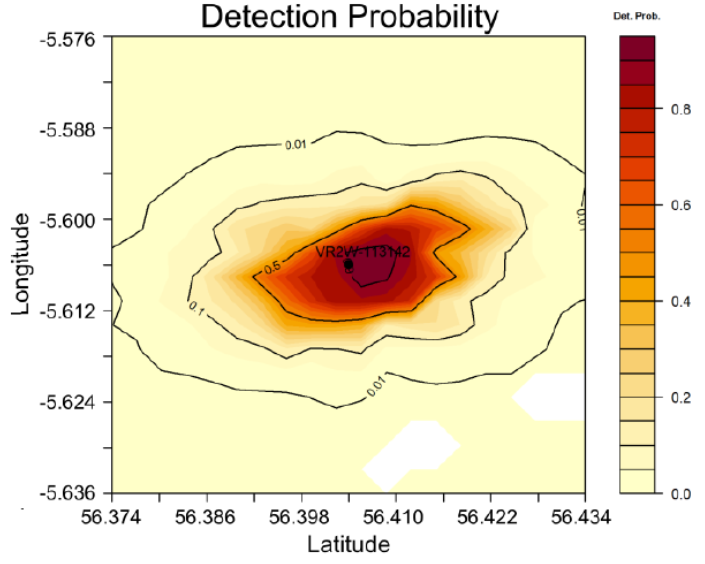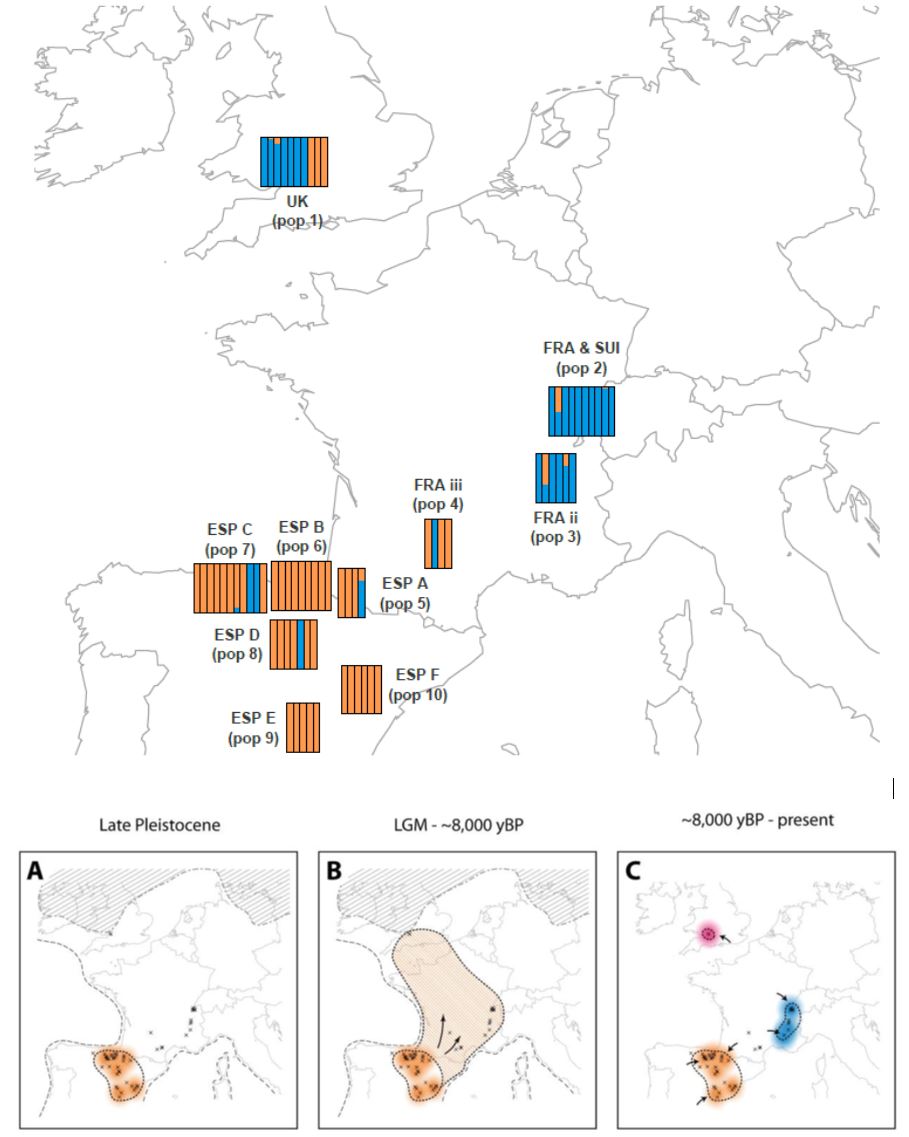
AUGUST 2021
Integrated Research for Integrated Ocean Management
integrated research
social-ecological systems
ecosystem-based management
Coastal and ocean social-ecological systems (SES) are inherently complex, as are the approaches to manageme those spaces. In the Decade of Ocean Science, research priorities to support the sustainable use of coastal and ocean resources are in the spotlight. In order to address management challenges, there is an urgent need for integrated approaches that bridge the gap between science, policy and society. From a survey targeted at projects and initiatives that apply multi-, inter-, and transdisciplinary approaches, we draw examples of challenges and good-practices and synthesize key considerations for research approaches that tackle the challenges in managing the ocean space.

AUGUST 2019
From Transmissions to Detections - The impact of environmental variation on acoustic detection probability and its implications for spatial management in a Marine Protected Area
Passive Acoustic Telemetry
space-use
spatial modelling
elasmobranchs
Shelf habitats of the Scottish West Coast harbour one of the last pockets of the critically endangered flapper skate Dipturus intermedius. In order to assess the effectiveness of spatial protection measures like the Loch Sunart to the Sound of Jura Marine Protected Area (LSSOJ MPA) for such a mobile species, scientific data on its space use is required. Data from a Passive Acoustic Telemetry (PAT) array, can yield such information. Yet, for an unbiased interpretation of PAT data, an understanding of detection probability and the impacts of distance and other spatio-temporally varying factors is critical. With no prior range-testing this understanding for the structurally complex environment of the LSSOJ MPA has remained poor. To this end, this Master thesis aims to derive a predictive model for detection probability for this area using data from drift testing experiment around eight receivers of the PAT array.

AUGUST 2017
Using fingerprints of the present to reconstruct footprints of the past - A case study of the phylogeographic history of Arabis scabra
AFLP
Brassicaceae
biogeography
phylogeographic history
The climatic fluctuations during the Late Pleistocene and during the Holocene warming caused various range changes in temperate and cold-adapted plant species, often resulting in disjunctions.The absence of molecular variation in alignments of nuclear ITS and the plastid trnL-trnF region suggests the disjunct range of the crucifer Arabis scabra observed today, to have derived from processes driven by the most recent glaciation cycles, probably since the Last Glacial Maximum. This study uses Amplified Fragment Length Polymorphisms (AFLPs) obtained from herbarium specimens to resolve phylogenetic relationships among populations of A. scabra in order to reconstruct the species’ phylogeographic history.
